Adding a fresh layer of paint to your home can bring a new breath of life and have any household looking brand-new.
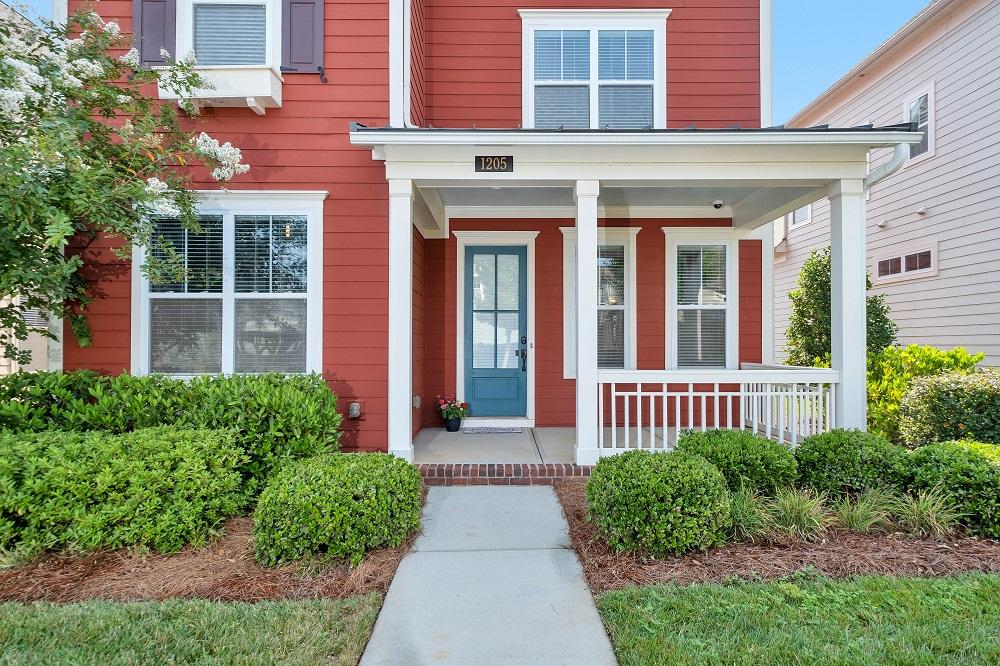
For homeowners with multiple floors looking to paint the exterior, it can be daunting when allocating a budget for the project. Labor costs, the paint itself, and other hidden costs can add up quickly.
In order to get the job done, you can choose to do it yourself or hire a professional crew to get it done for you. Both have their own costs and materials required that can affect how much money is to be spent.
We have put together a guide in order to help you plan your budget in the most efficient way. Without further ado, let us begin planning the renovations!
How Much Does It Cost To Paint A 2 Story House Exterior
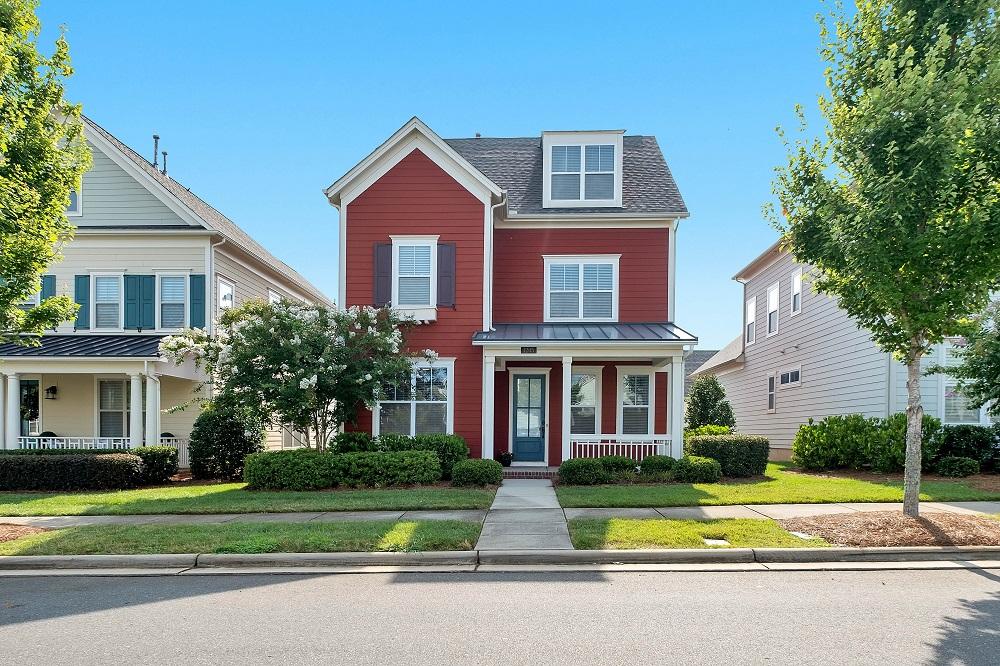
Hiring A Crew
Before planning anything, you should decide whether you want to do the job yourself or if hiring a crew is the route to choose. Either option is plausible so long as a breakdown of costs is known beforehand.
If you are looking to hire a crew, the very first thing to keep an eye out for is the experience a company has. Employing licensed professionals will ensure that the overall experience and result is of the highest quality possible.
On the one hand, a professional crew will take all the required steps to ensure the paint is applied with precision to last long. Taping off areas, cleaning and prepping the house for application, and other steps are taken carefully. Additionally, a professional painter will have the knowledge of how much paint is needed, how many coatings, or when to use a primer.
On the other hand, a crew that does not have as much experience can make the entire project take much more time than is necessary. What’s more, the end result may not be as put together as you may like.
Another aspect of cost to keep in mind is the quotes offered by contractors as there are multiple floors being worked on. Having an additional floor can potentially raise the cost depending on where you get a statement done.
Furthermore, hiring a crew will entail paying for scaffolding and the necessary equipment to reach that higher second floor. Insurance provided by the contractor is a good idea to have especially when dealing with multiple floors. There is a plethora of potential damages to the house and workers, so insurance should be considered as precaution.
Average Cost Of Hiring A Crew
When looking into hiring a crew to work on your house, only the best available contractors should be considered. This is a project that is more of a one-and-done deal. Touch-ups in the future can be a nuisance and can be avoided entirely by having a quality job done right off the bat.
Many private painters or contractors work based on the hours worked. To get a frame of reference to compare with the statements you get, the average rate is anywhere from $25 to $100 per hour. Hiring more personnel can raise the cost accordingly but also expedite the process overall.
For example, a common breakdown of labor costs includes priming and painting. If two painters are hired, this job can take anywhere from 16 to 32 hours to cover the entire area, including trimming. This brings the total cost to $1,600 to $3,200 just for labor. However, it can be cut in half by excluding priming.
Compare this to the national average cost of painting a house at $1,700 to $3,700. A two-story house calls for more work to be done, so the average cost of hiring a crew falls on the higher end of this average.
Costs of labor, materials, and tools, as well as the potential danger when working on elevated surfaces, bring this average cost up. To decide on the best contractor that will give you a valuable outcome for your money, pay attention to their ratings to get an idea of other’s experience when hiring them.
Of course, a highly rated company is favored over lower-rated ones. These crews are assured to get the job done efficiently with a long-lasting, beautiful result. However, their prices are sure to be more than lower-rated crews due to their higher level of expertise.
Breakdown Of Expenses In Hiring A Crew
There are a few extra expenses that may pop up when hiring a crew. Before hiring one, it is a good idea to understand what these expenses are so you aren’t blindsided and come up short when the job is completed.
Crews use their own tools and incur their own unique costs that do not factor in if you go the DIY route. Every painting team has its own rates and how willing they are to work on a risky project involving an additional second floor.
-
Transportation
One cost factor that is not considered in the DIY method is the transportation of the crew and materials to the house. Paying for fuel for the truck or any repairs necessary while working on the project are factors the crew needs to consider.
These costs are handled by charging more to get a project done. Essentially, beyond paying for the actual labor and materials involved, you need to factor in the extra costs of transportation for the crew.
-
High-Quality Work
A reliable service company will entail a requirement of higher-quality paint and effort overall. Caulking and spackling are common extra features that high-end painters use to give a longer-lasting finish. These can add their own costs to the project overall.
-
Insurance
Another unique cost factor of hiring a crew is paying for insurance. Licensed contractors are an industry standard for their quality performance and safety provided to their workers. To reimburse the costs of insurance, these contractors charge a bit more. After all, working on multiple floors can be risky and result in even more expenses.
-
Sales Commission
If you have used a salesperson sent from a contractor to hire a crew, it is necessary to pay for their services. These representatives are widely used by contractors to scout for potential jobs and can incur their own expenses once the project is completed.
-
Area Covered
When getting a quote from the contractor, there are a few different factors that affect the way they draw up their pricing. One of these factors is the area covered; there’s a fixed rate for every square foot to be covered. These can go from $1 for a square foot to $4 for the same, depending on the contractor’s rates.

Doing It Yourself
Choosing to take matters into your own hands can be a challenging task. To ensure your project is done as efficiently as possible, preparation and planning are key.
Of course, the polished look that using a professional crew to paint your house will bring is not possible when doing the job yourself. However, finances can be adjusted more flexibly, something that is not possible when working with a contractor.
Knowing what materials are needed and how to use them can save you spending extra time and money just to complete the job. Here is what you should consider before deciding to paint your house by yourself.
-
Paint
Of course, the most basic of materials required when painting your house is the paint itself. Look for exterior paint which is compatible with the material on the exterior of your house.
A commonly overlooked factor that can determine the longevity of the paint is compatibility. Paint adheres differently to different materials, so looking for paint that can permeate the surface of your house well can help it last longer.
Additionally, the paint’s colors can shift in hue depending on the underlying material it is coated on. The worst possible setback is finding out the paint you bought doesn’t match the shade you had in mind—all the more reason to pick up a quality paint that is compatible.
-
Scaffolding
Painting the first floor of the house is a breeze as all the walls are within reaching distance. At the most, an extended brush may be used to reach those higher spots.
However, when painting the second floor, it may not be enough to use a brush on a pole to cover the entire exterior. Not to mention the places you need a precise application such as windowsills and trimming.
As a result, ladders or scaffolding to give you an elevated working base is a necessity when it comes to painting the second floor. To add an extra layer of stability and convenience, an additional ladder and plank can be used to create a platform.
Altogether, purchasing a way to reach the second floor can potentially be the costliest factor when painting the exterior.
-
Application Instruments
Paint can be applied using a couple of methods with varying ease and effectiveness. One of the traditional methods is using a roller and brushes. This method is not as commonly used as it takes a long amount of time compared to other application methods.
However, for smaller two-story houses, it is still a bonafide option that can get the job done quickly. It is not recommended when working on larger areas; holding a roller above your head can become tiresome in the long run.
An alternative to the traditional brush and roller is using a paint sprayer to coat the paint on. This method requires little to no effort as the sprayer applies an even coating every time. Additionally, the even coatings give a cohesive, professional look to your house.
Purchasing a handheld sprayer off of Amazon is enough to get the job done quickly. However, these sprayers can cost more than a simple brush and roller. What the sprayer lacks in affordability it makes up for in efficiency and convenience.
Masking tape and film are not exactly instruments used to apply the paint, but they are still an important part of the application process. Using masking tape is easy to apply and remove as well, helping you have cleaner lines between surfaces.
Taping off areas with film, which you do not want to be painted, can come in handy, especially if working with multiple colors or surfaces. Any accidental brush strokes or dripping paint will fall onto the film and can simply be removed after the paint has dried.
Additionally, masking tape and film will be needed when covering up your windows. You wouldn’t want to have to clean up any stray flecks of paint off your windows after the project is done.
-
Surface Preparation
Before starting on painting the house, the surfaces should be prepped so the paint can adhere properly. Different materials require different prep methods and tools, but the extra effort is worth it in extending the lifespan of the paint job.
As a general rule of thumb, using a power washer to clean off the exterior is a good idea. Dirt, insects, and any possible flaking are removed for a smoother surface. If there are any materials or elements which can be removed easily, the paint will adhere to those pieces and eventually flake off quickly; the paint sticks better when applied to the walls directly.
Additionally, if there are patches of the house that need some touching up, it is a good idea to get them repaired before painting. Repairing a section of the house after the renovation is said and done can give an unfinished look to the house.
While it is not a requirement for every house’s exterior paint job, purchasing sandpaper can come in handy for prepping certain surfaces. Every house uses different materials in its construction. For houses that have wood panels and walls, rubbing some sandpaper can smoothen out the wood and give the paint a flush look.
-
Safety Equipment
Prevention is better than cure; do not compromise when it comes to safety. Especially when working at a height and with materials that can be harmful if inhaled.
Working with paint can be dangerous if safety equipment is not properly used. Items such as safety glasses, cotton masks, and work gloves will help protect against any potential injuries and adverse health effects.
-
Caulking
Covering windows in the painting renovation process is essential in keeping water out of the house and maintaining temperatures within. Caulk is applied to the window frames to create a seal; this can save you energy bill costs by keeping the inside at a comfortable temperature.
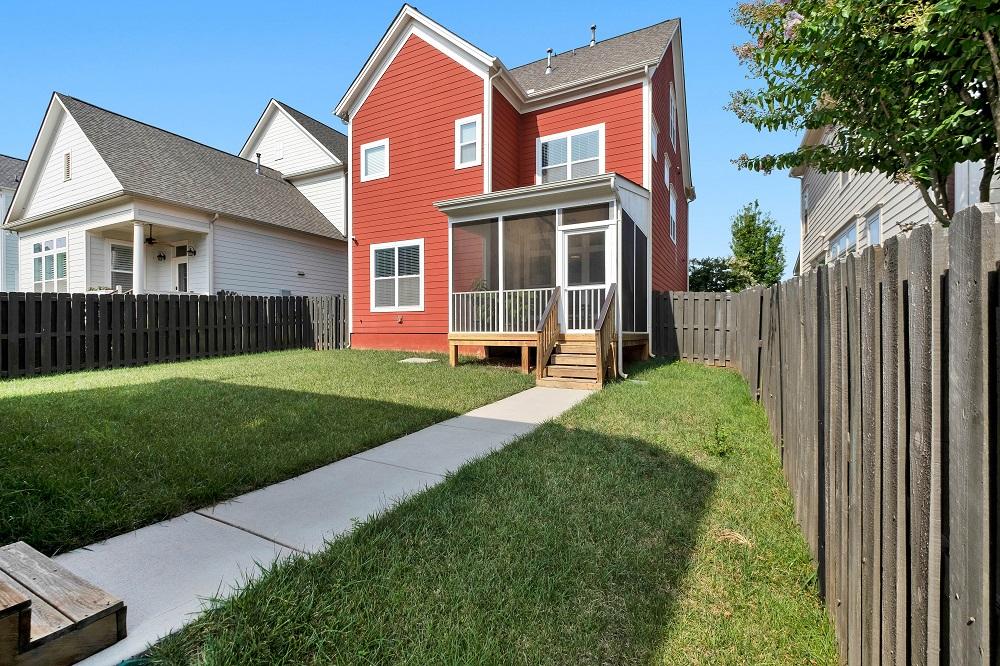
Estimating The Cost To Do It Yourself
How is one to begin estimating the cost of painting a house’s exterior by yourself? A good first step you could take is to get a tape measure and find how much area needs to be covered.
If you have never done this before, break the house into basic shapes and measure each side. Add these shapes together to get the total surface area of the house’s exterior. Keep in mind the line where two shapes meet can be ignored as it falls within the surface area of the house’s exterior.
From here, the rest of your planning will fall into place. You can get a rough idea of how much paint you will need, any tools to apply said paint, as well as what you’ll need in order to have a safe and even application.
Once you have an idea of how much area you are covering, there is the issue of calculating the windows and other areas which do not need paint. This can be tricky to figure out yourself, but using a paint estimator tool, it can be done in no time at all.
There are numerous online tools that will help you calculate costs to cover a certain area with paint. These tools are useful as they can factor in windows into the estimation, saving you a bit on paint costs.
Purchasing painting tools are not too heavy on the budget, but if unavailable, it will still add expenditure to the project. Additionally, any prep materials needed should be purchased beforehand. These are not too expensive either; at least $100 should cover the basic prep tools required.
Overall, the costliest amenity when painting the house yourself will be the time and energy taken to complete.
Price Of Paint For Different Materials
Many modern houses incorporate a variety of material types in their build. Depending on the material, the paint type needed as well as unique application methods, the cost of painting different surfaces can vary.
Consider what materials make up the exterior and search for the corresponding paint that is compatible with it. Using paint that is specially designed to coat a specific material can add to the structural integrity of the underlying material. This means wood, stone, brick, and any other material lasts longer with a strong coat of paint.
-
Vinyl Panel Siding
One of the most popular exterior materials of houses today is vinyl panel sidings. These are used for their durability and ease of painting. Applying a fresh coat of paint can change the entire aesthetic of the house, as well as touch up any dings and dents in the vinyl siding.
If your house uses vinyl panels on its exterior, the cost to paint one square foot will set you back $1.35 to $3.25. For the benefits that a paint job brings, the cost to get the paint supply is well worth it.
-
Wood
Another commonly seen material in house exteriors is wood. Wood is one of the easiest materials to paint, not to mention the easy availability of tools needed to do so. For natural wood surfaces, expect anywhere from $1 to $3 per square foot.
Plywood is a type of wood paneling that is used to give the effect of actual wood planks on the outside of a house. This material can be costlier to paint due to its specialized routed design. A bit more than natural wood paint, it can cost $1.50 to $4.00 per square foot.
Engineered wood is used widely for its ease in painting. Not only does the cost per square foot sit at a comfortable $1 to $2, but the wood comes pre-primed as well. Overall the painting application process is incredibly easy when working with engineered wood.
-
Aluminum
Panels of aluminum are used to add a rustic aesthetic to the outside of the house. Essentially large, smooth sheets of metal, these surfaces are non-porous. This can make it challenging for the paint to adhere to it if a compatible paint is not used.
As aluminum is exposed to the elements, there is an inevitable breakdown and fade over time. To touch up the paint job or change the look completely, the specialized paint can set you back $0.83 to $2.50 per square foot.
The amount of paint needed is not too much, as spreading the paint across the non-porous surface is relatively easy. However, purchasing primer is a requirement to prep the aluminum paneling, so the paint has something to grip.
-
Steel Siding
Houses that use steel siding on the exterior do not necessarily require a coat of paint. It is similar to aluminum panels, save for the increased durability of the steel siding.
Regardless, if you do choose to paint your steel siding panels, the specialized paint can cost $1.50 to $2.50. It should be noted again that painting your steel siding panels will not increase its durability and is purely an aesthetic choice.
-
Brick And Stone
In areas that see a high occurrence of strong wind, it is common to see stone and brick elements being used in the exterior of the house. These add a natural look to any home while keeping it rooted strongly to the ground.
As both these materials are porous in nature, painting them can be costlier. More coats may be needed to have effective coverage. For bricks, the paint can cost anywhere from $2.40 to $4.20 per square foot. Additionally, the cost to paint a square foot of brick costs around $2.40 to $5.
An alternative to having the look of brick or stone without all the maintenance attached is brick and stone veneer panels. These veneers are made from fiber cement and are textured to resemble their respective natural counterparts.
They are much easier to paint as compared to natural brick and stone; paint is not absorbed as much. The cost to paint these fiber cement veneers ranges from $2.50 to $4.50.
-
Concrete
One of the more uncommon materials used in houses, concrete is used for its durability. While it can withstand its fair share of exposure, adding a layer of paint can minimize the amount of maintenance needed.
Painting concrete can require a primer to prep the surface; however, the application process is quite simple. It requires a bit more labor but is easy to apply the paint regardless. Factoring in the primer and paint, concrete costs around $1 to $3.50 for one square foot.
-
Fiber Cement
Modern houses use fiber cement for its specially designed composition for easy paint application. The surface is non-porous, which means multiple paint coats are not necessary for the paint to take hold.
When installing the fiber cement, you have the option to have either a pre-primed or pre-painted cement installed. A pre-primed surface can save you labor costs, but to paint a square foot of fiber cement will set you back around $1.25 to $3.25.
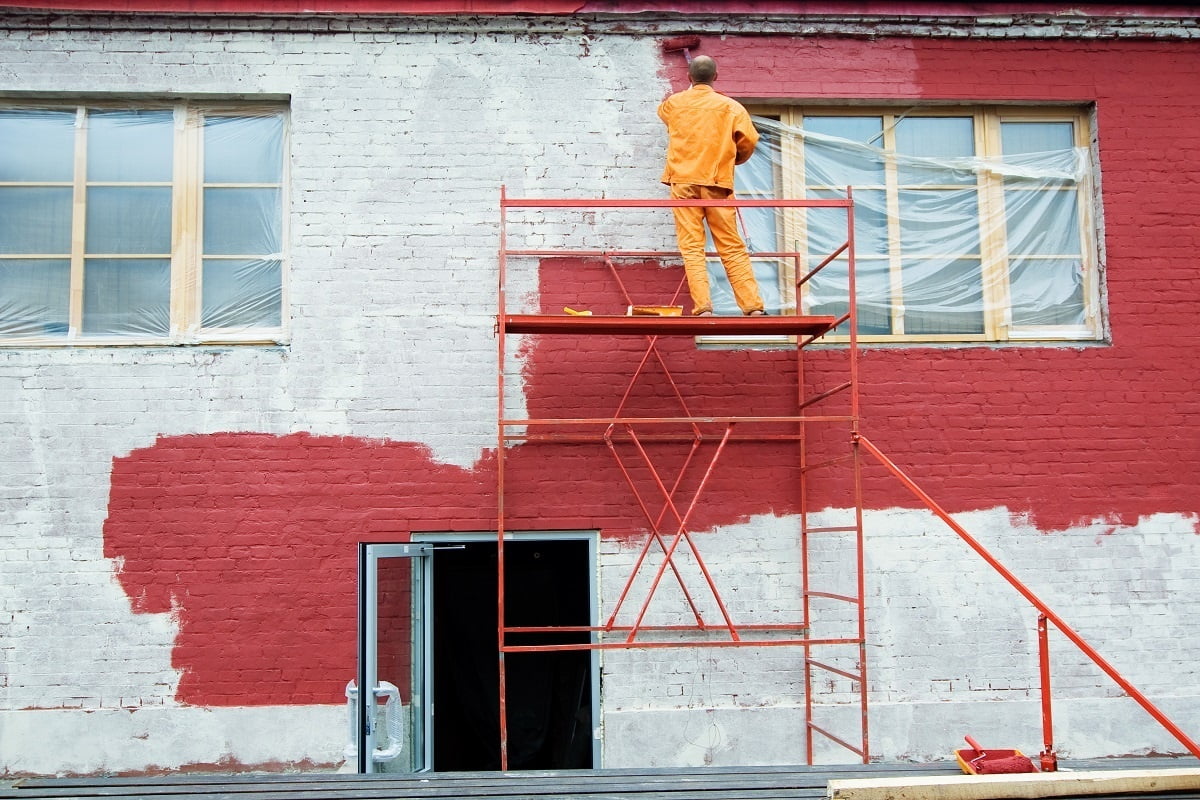
Price Of Paint Types
Just as there are specialized paints for a corresponding material type, there are also types of paint formulas available. These formulas have a unique composition which makes them interact with the surface it is applied to in different ways.
Based on the type of finish you are looking for, a certain formula can change the way a certain paint turns out once it is dried. Some types of paints may be easier to work with or provide better protection than others. You can choose a suitable option depending on what features you are looking for in the paint.
-
Exterior Latex Paint
Using exterior latex paint with a water base has many benefits when applied to a surface. This paint is incredibly easy to apply with its fast drying time. Additionally, the water-based formula has a simple clean-up to help apply it precisely in specific areas.
In terms of other benefits of using exterior latex paint, the paint is resistant to yellowing over time. This ensures it keeps its bright hue for longer, even if exposed to UV rays and other elements.
Costing anywhere from $20 to $50 for a gallon, this paint is a moderately priced option. There are a wide variety of color options to choose from, no matter what aesthetic you are going for.
-
Exterior Acrylic Latex Paint
Working with vinyl and smooth surfaces can be difficult to paint without a compatible paint type. For these surfaces, acrylic latex paint is the most suitable option.
Where this paint shines is in the easy clean-up of accidental applications using soap and water for a precise application. Additionally, it is easy to work with as there are little to no VOCs produced.
On the other hand, exterior acrylic latex paint does have some drawbacks. For example, the paint does not have a texture that can withstand water exposure. This can make it inaccessible for use on houses that get an ample amount of rainfall.
What’s more, the paint is not the most durable option available. It is prone to chipping after some time and requires more maintenance as a result.
However, if this paint is compatible with your housing materials and climatic conditions, it is a great paint to use. It is usually priced at around $20 to $50 per gallon, similar to the normal exterior latex paint.
-
Exterior Oil-Based Paint
For wood siding and trim specifically, using an oil-based formula may have better effectiveness. The oil will help the paint permeate the wood for a stronger bond.
As the oil-based paint is a penetrating paint, the drying time can be longer than other options. This can make completing a project take up more time, but there are also some benefits to this. The longer time allows you to work with the paint for a longer period, so once it is dried, it has the cleanest finish possible.
Making sure the paint is applied the way you want it before it dries is important, as cleaning up dried oil-based paint can be challenging. If by chance, there are any clean-ups required, then turpentine or mineral spirits must be used to break it down.
Additionally, the paint has quite a few environmentally harmful VOCs in its formula. Once dried, the paint has a tendency to fade and yellow over time. In some cases, it has even cracked fully to expose the underlying material.
The average price of a gallon is usually $20 to $70, making it one of the more expensive paint types available. However, the paint is worth it for its easy application and ability to spread smoothly.
Price Of Paint Primer
Using a primer on your house can determine how effective the paint sticks and lasts on a surface. Applying primer prepares the surface to adhere to the paint better and prevent the colors from fading.
Primers are necessary on surfaces that are being redone completely or being painted for the first time. Additionally, for surfaces with an already existing paint job, a primer will help the new layer to adhere on top of the old.
When changing the color of an exterior paint job from a lighter shade to a darker or vice versa, a primer can come in handy. It lowers the number of coats required for any changes to be noticeable, which ultimately does save on paint costs.
Different primers have been designed to be used with a corresponding paint type. It is important to use a matching primer with its paint counterpart for maximum effectiveness.
-
Exterior Latex Primer
When working with latex paint, using a latex primer, otherwise known as an acrylic primer, can make applying the paint easier. This type of primer has a fast drying time and little to no VOCs. It is also versatile, being compatible with metal, fiber cement, wood, and masonry.
When applying the primer, it can be cleaned easily in case it drips or is accidentally applied on a surface—all these benefits in one primer that is priced at $20 to $80 a gallon.
On the other hand, the acrylic primer does have a few weaknesses and shortcomings. It is not able to withstand UV rays well, often cracking and chipping easily as a result.
-
Adhesive Primer
Designed for use on surfaces that do not have the most grip or texture, this primer can adhere with the most efficiency. Materials such as vinyl and metal are some of the surfaces this primer is compatible with.
Applying it is easy as it can be sprayed on for an even coating that dries in little to no time. As is the case with many primers, cleanup is easy for tight spots. Priced anywhere from $15 to $60 a gallon, this primer is a strong choice for those with glossy surfaces.
-
Exterior Oil-Based Primer
A truly unique primer, exterior oil-based primers are incredibly strong in adhering to the materials. They have a special restorative quality when used on dark spots, stains and removes any odors.
An additional useful feature is the ability of the primer to act as a sealant when used with wood. This makes it an ideal primer for wooden surfaces as it can protect the wood from any cracking.
One caveat of using an exterior oil-based primer is that it can leave streaks and brush marks. As such, applying it should be done carefully with smooth strokes.
Purchasing one gallon of this primer ranges from around $20 to $50. Altogether it is a great value for money, especially if you have a large surface area of wood to cover.
-
Exterior Shellac Primer
Using shellac primer on the exterior of your home can bring a variety of benefits. For one, the drying time is minimal and has a strong bond once dried. In fact, out of all the primers, shellac primers have the strongest adhesion.
Furthermore, the primer is able to cover stains and remove odors indefinitely. All these benefits are included in this primer that is usually priced at $20 to $60.
However, you should keep in mind some potential drawbacks when working with this primer. Shellac primer can be a tedious process, so application should be made carefully. In order to remove the dried shellac, you can use an acetone nail polish remover or denatured alcohol.
As cleaning it off of a surface can be a chore, it is not advised to apply this primer with a spray. A brush is more preferred for increased control over the application.
Additionally, the shellac primer can have a strong smell and thick viscosity. This can make working with it over a longer period or large area a hassle.
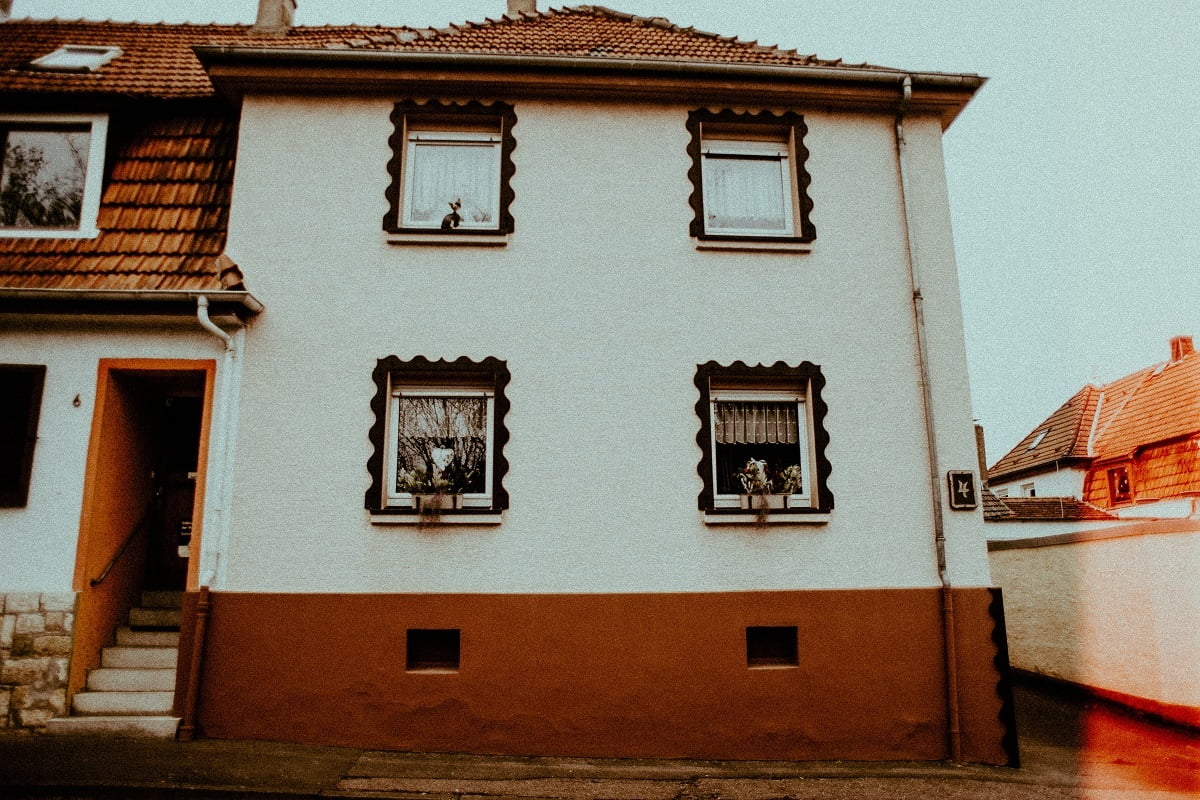
Price Of Exterior Paint Finishes
Adding a finish to the paint on your house can elevate its appearance and bring out the color of the paint more. These finishes range from matte textures to a shiny, glossy finish.
These finishes can have different effects depending on what material it is applied on. As a result, keeping in mind what finish paint has should be a consideration, match a suitable finish to the materials in your house.
-
High Gloss Finish Exterior Paint
Paint that has a high-gloss finish will make the colors pop when it is dried to the point of being reflective. Due to the tendency to draw the eye, this type of paint finish is used on areas that you want to highlight—for example, a door or entrance or as detailed trimming.
The durability of this paint finish is incredibly strong and can withstand heavy climatic conditions well. One gallon of high-gloss finish averages anywhere from $50 to $70.
-
Semi-Gloss Finish Exterior Paint
For a more discreet finish, a semi-gloss paint can be used on trim for a touch of detailing. This paint does not have as much of a shine as the high-gloss finish.
Once dried, it is easy to clean surfaces painted with this paint. Applying it on surfaces that see a lot of exposure to dust or mud is a good idea. Exterior surfaces can be maintained much easier with this finish covering those smaller, hard-to-reach spots.
As this finish does not have a highly reflective sheen to it, it is priced in a lower range of $40 to $60 for a gallon.
-
Satin Finish Exterior Paint
An attractive finish for its smooth texture and sheen, the satin finish appears to have a satin texture to it. Not only does it have a charming appearance, but the paint is incredibly durable.
Satin finish paints are able to withstand a number of stains, scuffing, and scratches. Moreover, it does bring down the intensity of colors, making them deeper than they actually are.
By lowering the brightness of the paint’s colors, a satin finish paint can hide these blemishes well. Additionally, it is easier to clean as any evident damage is hidden in the deep colors of the paint.
One gallon of this type of finish will usually set you $30 to $50. While it may be useful in hiding blemishes and dents, you should also keep in mind its tendency to darken already dark colors.
-
Eggshell Finish Exterior Paint
Easily one of the most common finishes used, eggshell has a barely perceptible sheen to it. There is little to no gloss on the surface once it has dried, making it a low-profile look while adding a pop of color to the exterior.
To get an idea of the sheen that an eggshell has, it is similar to that of an actual eggshell. The slight sheen allows it to hide indents and damages to the surface.
What’s more, this paint finish has an easy application process even for novices. Applying it with a brush will not leave any streaks or brush marks. Once dried, this finish is easy to clean and maintain, which further increases its versatility and functionality.
All the benefits that an eggshell has in its maintenance, application, and appearance, make it a favorite finish to use. Picking up a gallon of this paint finish will set you back anywhere from $30 to $40.
-
Flat Finish Exterior Paint
Possibly the most affordable paint finishes, flat finish paint will cost around $15 to $40 for one gallon. Out of all the options, it has the least reflection and has a slightly dry texture to it.
Additionally, it is able to easily cover up imperfections and blemishes due to its matte appearance. While it is able to hide a number of flaws, it is prone to chipping away easily.
Another drawback to using a flat finish paint is the attraction it has to dirt. Any stray dust or dirt will hold onto the surface well due to the texture of the finish.
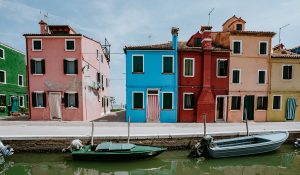
Conclusion
Now that you know what materials and types of primer, paint, and finish you need to paint the exterior of a house, you can begin formulating a budget. Add in your tools and other safety equipment costs for a better idea of the necessary expenditures.
Also, don’t forget to take into account the efficiency of using certain types over others; these can cut down the labor, time spent, and cost overall. Depending on your house’s materials and the area to be painted, the cost can fluctuate.
Alternatively, you can choose to hire a crew to get the job done for you. This can be costlier, but the job will be completed sooner with a high-quality result.
No matter which option you go with, the exterior of any house can only benefit from a fresh coat of paint. It is an investment that adds value and a touch of personality to any home.
Related Articles
How to Remove Spray Paint from Concrete
13 Best Epoxy Spray Paint Resins To Consider Today
9 Best Paint Primer For Drywall Tested
9 Best Paint Brush For Polyurethane
8 Best Basement Cement Floor Paints
7 Best Exterior Primer For Peeling Paint
